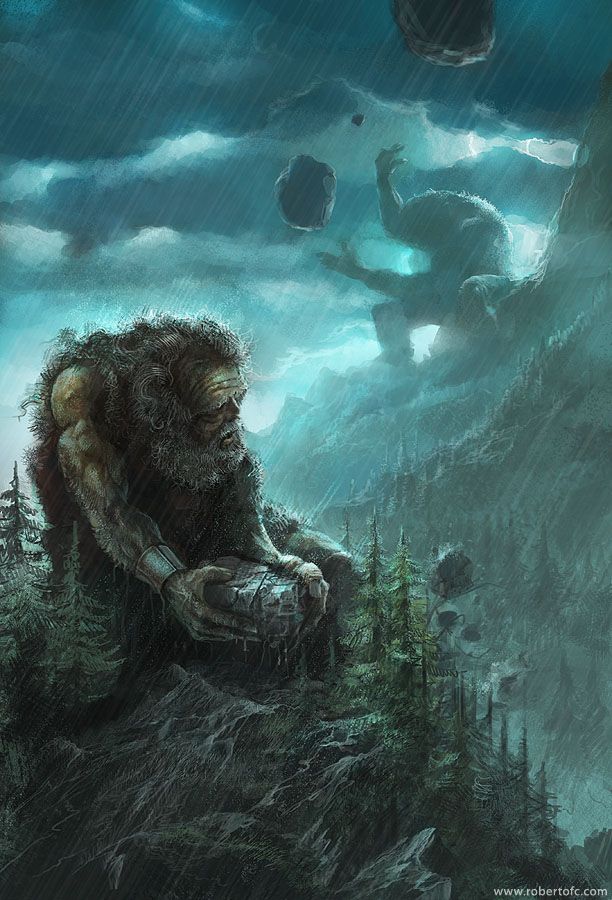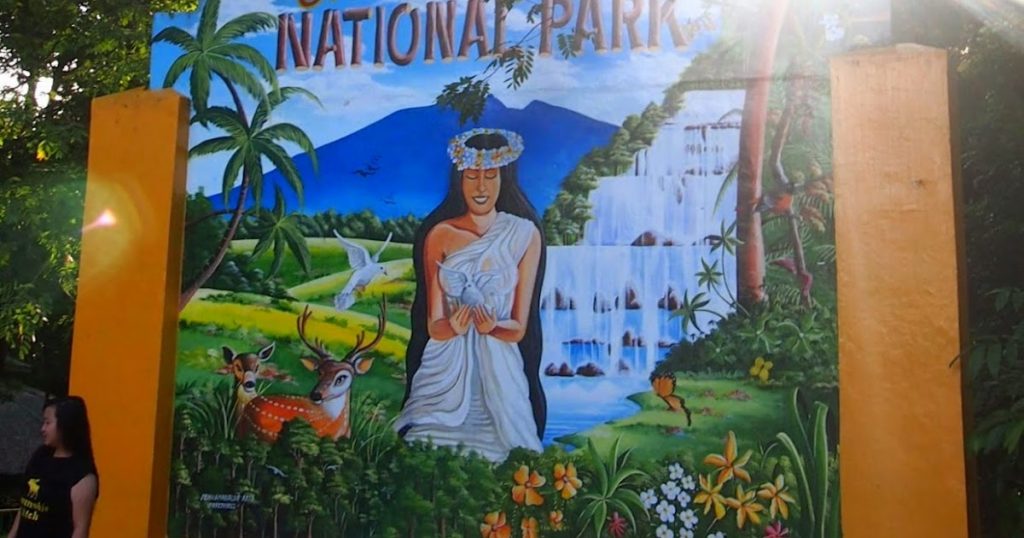MOUNT ARAYAT is a potentially active stratovolcano located in the province of Pampanga on the island of Luzon, Philippines. Popular folklore has stated this mountain to be the home of the diwata Maria Sinukuan. However, in ancient Kapampangan folklore as well as the research gathered by Kapampangan students of Henry Otley Beyer, it was and is the abode of Apung/Aring Sinukuan, rival of Namalyari of Mount Pinatubo, who is in varying versions, the son of Kargon-Kargon who was mortally wounded in a fight with a giant from the Zambales Mountain Range which is said to be the home of Apu Namalyari/ Malyari, a deity of the Sambal, Aetas and Kapampangans living on the Zambales range.
It is worthy to note that the Tres Marias (diwatas of the mountains) are often referred to as being Maria Cacao (the diwata of Mount Lantoy), Maria Makiling (the guardian of Mount Makiling), and Maria Sinukuan of Mount Arayat. In this Pampanga legend, Maria Makiling is one of three daughters born to Apung Sinukuan. The other two names and the mother are not mentioned. Perhaps the more modern tales of Maria Sinukuan (diwata of Mount Arayat) were meant for her to represent one of the sisters who had carried on her father’s name.

The Kapampangan Legend of Mount Arayat
Once upon a time Mt. Arayat was not where it stands now. It was located far away, near the present town of Candaba. One day, while some giants were holding a contest to show their different abilities the Strong One said, “Now I will show you what I can do.” He then got hold of the mountain and pulled it out by its foundations and carried it to the town of Arayat. The place from which the mountain was lifted was marked by a depression. This is now the Candaba swamp.
Once in its new location, the mountain became the home of the strong giant. Now it happened that many towns away there was a group of mountains, the Zambales range. The giants in those mountains had a feud with the strong giant of Mt. Arayat, one of whom was named Kargen Kargon. They started hurling rocks at the home of the Zambales giants, and these hit many places along the mountain range. Hence, Zambales range today is broken and jagged along the top.

www.robertofc.com
The Zambales giant, on the other hand, hurled only two rocks at Mt. Arayat, but they hit too hard that they knocked off the summit of the mountain. This is why the top of Mt. Arayat is flat and irregular unlike that of Mt. Mayon which it once resembled. After many years the giants of Mt. Arayat died and an old enchanter called Sinukuan came to live near the top of the mountain. His home was a great white rock bigger than a church.
Although the enchanter lived hundreds of years ago, travelers can still see his home. This is why on the top of Mt. Arayat, on the west side of it, travelers many miles away can see a white spot which looks like a patch on a horse’s forehead. This is the so-called White Stone, where Sinukuan lived with his three daughters until he was driven away by civilization to seek shelter inside the mountain forever.
Many barrio folks still say that some time in the future Sinukuan may come out again. Mt. Arayat used to be the home of the Colorums who waited for Sinukuan to come out of his cave and to find a new paradise on earth for them. Sinukuan’s three daughters were all named Maria and some believe that Maria Makiling of Mt. Makiling was one of them. All had long beautiful hair like the tresses of the Virgin. Aside from being beautiful they were industrious and although their father was a rich lord who commanded all the beasts in the forest and owned all its fruitful trees, they would go out to neighboring towns and sell produce from their realm.

Sometimes they played tricks on the lowlanders. They would come to a poor woman’s hut and propose to exchange their rice bran for rice or corn. Often they were refused but they always went away without anger. However, a few, thinking that there must be something mysterious in the stranger’s bargain, would even exchange valuables for the rice bran. When the three Marias had gone these simple- minded folks would look at the rice bran and Find that it had turned into gold.
Has anyone seen the inside of Sinukuan’s home in the great White Stone? Often they had in the old days; the door of the fortress was wide open for visitors who might want to come in. Yet no one would voluntarily go there, so afraid were the people of even coming near the rock. But simple-minded farmers who had not known evil were sometimes favored by Sinukuan and his daughters to come and visit them. They would wait unseen for a farmer at dusk, when he would be walking slowly home and then suddenly stop him by putting all sorts of impediments in his path in such a way that his footsteps were led on and on to the big rock. Once he is there, Sinukuan and his daughters would reveal themselves, and take the guest to a chamber whose floorings and walls were of solid gold. He would be forcibly offered a repast on a gold plate matched by gold knives and spoons. If he partook of the repast his body and soul as well as his mind became the property of Sinukuan and he never would like to leave the place again. If, however, he declined until he wasted away, the old man and his daughters would take pity on him and send him back to his family with precious gifts.
The Mt. Arayat legend may be dismissed today as a myth, but it is based on facts elaborated on by the minds of the people. If you go to the mountain today, you will still find a great white stone as big as a church. You will also see the flattened top of Mt. Arayat where the rocks from the Zambales giant are supposed to have landed. Even now woodcutters walk carefully about the former home of Sinukuan. They do not point unnecessarily at strange insects, animals or trees for fear of offending the grand old man of the mountain.

SOURCE: Eugenio, Damiana. Philippine Folk Literature: The Myths. Quezon City: The University of the Philippines Press. 2010
Jordan Clark is a Canadian born descendant of Scottish immigrants living on the homelands of the Lekwungen speaking peoples. His interest in Philippine myth and folklore began in 2004. Finding it difficult to track down resources on the topic, he founded The Aswang Project in 2006. Shortly after, he embarked on a 5 year journey, along with producing partner Cheryl Anne del Rosario, to make the 2011 feature length documentary THE ASWANG PHENOMENON – an exploration of the aswang myth and its effects on Philippine society. In 2015 he directed “The Creatures of Philippine Mythology” web-series, which features 3 folkloric beings from the Philippines – the TIKBALANG, KAPRE and BAKUNAWA. Episodes are available to watch on YouTube. Jordan recently oversaw the editing for the English language release of Ferdinand Blumentritt’s DICCIONARIO MITOLÓGICO DE FILIPINAS (Dictionary of Philippine Mythology) and is working on two more releases with fellow creators scheduled for release later this year. When his nose isn’t in a book, he spends time with his amazing Filipina wife of 20 years and their smart and wonderful teenaged daughter.


